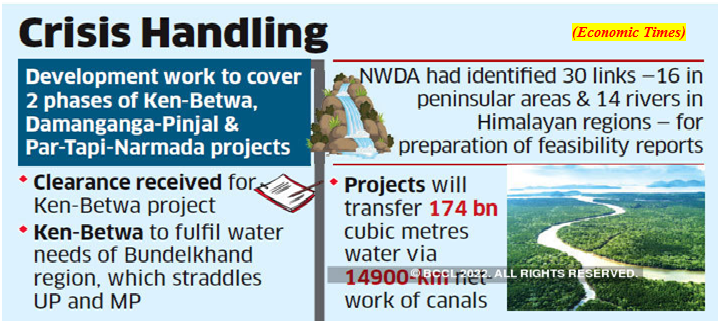Tiny underwater sand dunes shed light on larger terrestrial and Martian formations (GS Paper 3, Science and Tech)

Why in news?
- Researchers have been studying the dynamics of how crescent-shaped sand dunes are formed.
- Until now, however, there has been a glaring lack of grain-scale computations of the growth and evolution of barchan dunes.
Barchans:
- Known as barchans, these formations are commonly found in various sizes and circumstances, from finger-length dunes on the ocean floor, to stadium-sized dunes in the Earth’s deserts, to dunes that extend for a kilometer across the surface of Mars.
Key Highlights:
- Using a computational fluid dynamics approach, they carried out simulations by applying the equations of motion to each grain in a pile being deformed by a fluid flow, showing the ranges of values for the proper computation of barchan dunes down to the grain scale.
- Using a CFD-DEM (computational fluid dynamics/discrete element method) approach, they carried out simulations by applying the equations of motion to each grain in a pile being deformed by a fluid flow.
- Indeed, while Martian and terrestrial barchans influenced by wind occur on much larger time and length scales compared to aquatic cases, which occur in a matter of minutes and centimeters, they share many similar dynamics.
Way Forward:
- This is relevant to geophysicists, hydrologists, climate scientists, and engineers, as it will help accurately predict the future of barchan fields on Earth and Mars and provide an account of their histories.
Rajya Sabha passes Wild Life (Protection) Amendment Bill
(GS Paper 3, Environment)
Why in news?
- Recently, the Rajya Sabha passed the Wild Life (Protection) Amendment Bill, 2022 which is intended to amend the Wild Life (Protection) Act, 1972 to incorporate more species protected under the law.
- The Lok Sabha passed the Bill during the Monsoon session earlier on August 2, 2022.
Key Highlights:
- The Bill, which had undergone the scrutiny of a parliamentary panel, seeks to conserve and protect wildlife through better management of protected areas and rationalise schedules, which list out species under the Wild Life (Protection) Act, 1972.
- According to the statement of objects and reasons of the Bill, the Wild Life (Protection) Act, 1972 was enacted to provide for the protection of wild animals, birds and plants with a view to ensure the ecological and environmental security of the country.
- The Bill seeks better management of protected areas and provides for certain permitted activities such as grazing or movement of livestock and bona fide use of drinking and household water by local communities.
 Amendment Bill.png)
Obligations under CITES:
- The Bill seeks to implement India's obligations under the Convention on International Trade in Endangered Species of Wild Fauna and Flora (CITES), which requires countries to regulate the trade of all listed specimens through permits.
- After being passed, the Bill will allow the transfer or transport of a captive elephant for religious and other purposes by a person with a valid ownership certificate.
30 river linking component spotted: 16 under peninsular, 14 under Himalayan
(GS Paper 1, Geography)
Why in news?
- The National Water Development Agency (NWDA) under the Ministry of Jal Shakti has identified 16 links under peninsular rivers component and 14 links under Himalayan component of National Perspective Plan (NPP) for inter basin transfer.
- Pre-feasibility reports of all the 30 links have been completed and feasibility reports of 24 links and detailed project reports of eight links have been completed.

Interlinking of rivers programme:
- The government has approved the implementation of the Ken-Betwa Link Project (KBLP), one of the links under Peninsular Rivers Component, in December 2021 with an estimated cost of Rs 44,605 crore with central support of Rs 39,317 crore through a special purpose vehicle - Ken Betwa Link Project Authority.
- Further, under the intra-state link projects, NWDA received 49 link proposals from 10 states, out of which pre-feasibility reports of 39 link projects and detailed project reports of six link projects were completed and sent to states concerned.
- The large temporal and spatial variation in availability of water in country leads to recurrent floods in some parts, while some other parts experience drought. Interlinking of rivers programme has been envisaged to reduce regional imbalance in the availability of water.
National Perspective Plan (NPP):
- The NPP for water resources development was formulated by the government of India in 1980 for providing storages and transfer of surplus waters to water deficit regions so as to mitigate the effect of annually recurring floods and also to minimise the incidence of droughts.
- The NPP would give additional benefits of 25 million hectares of irrigation from surface waters, 10 million hectares by increased use of ground water, 34,000 MW of hydropower generation and other benefits like augmenting domestic and industrial water supply, navigational facilities, employment generation, fisheries, salinity control, pollution abatement, etc.



 Amendment Bill.png)
